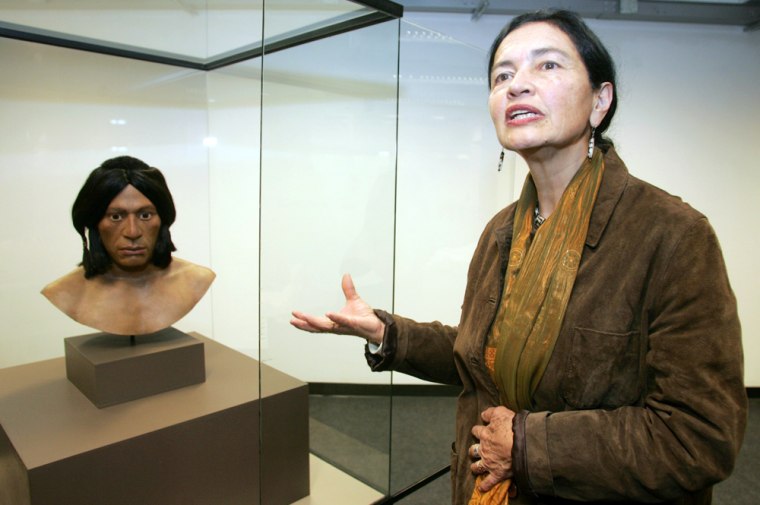Archaeologists in Peru have found a “quipu” on the site of the oldest city in the Americas, indicating that the device, a sophisticated arrangement of knots and strings used to convey detailed information, was in use thousands of years earlier than previously believed.
Previously the oldest known quipus, often associated with the Incas whose vast South American empire was conquered by the Spanish in the 16th century, dated from about A.D. 650.
But Ruth Shady, an archaeologist leading investigations into the Peruvian coastal city of Caral, said quipus were among a treasure trove of articles discovered at the site, which is about 5,000 years old.
“This is the oldest quipu, and it shows us that this society ... also had a system of ‘writing’ (which) would continue down the ages until the Inca empire and would last some 4,500 years,” Shady said.
She was speaking before the opening in Lima Tuesday of an exhibition of the artifacts which shed light on Caral, which she called one of the world’s oldest civilizations.
Found among offerings
The quipu, with its well-preserved, brown cotton strings wound around thin sticks, was found with a series of offerings including mysterious fiber balls of different sizes wrapped in ”nets” and pristine reed baskets.
“We are sure it corresponds to the period of Caral because it was found in a public building,” Shady said. “It was an offering placed on a stairway when they decided to bury this and put down a floor to build another structure on top.”
Pyramid-shaped public buildings were being built at Caral, a planned coastal city 115 miles (185 kilometers) north of Lima, at the same time that the Saqqara pyramid, the oldest in Egypt, was going up. They were were already being revamped when Egypt’s Great Pyramid of Cheops (or Khufu) was under construction, Shady said.
“Man only began living in an organized way 5,000 years ago in five points of the globe — Mesopotamia (roughly comprising modern Iraq and part of Syria), Egypt, India, China and Peru,” Shady said. Caral was 3,200 years older than cities of another ancient American civilization, the Maya, she added.
Caral ‘advanced alone’
Shady said no equivalent of the “Rosetta Stone” that deciphered the hieroglyphs of ancient Egypt had yet been found to fully unlock the language of the quipus, but said their existence pointed to a sophisticated, organized society where such information as production, taxes and debts were recorded.
“They came up with their own system becausem unlike cities in the Old World which had contact with each other and exchanged knowledge and experiences, this (city) in Peru was isolated in the Americas, and advanced alone.”
Caral’s arid location at an altitude of 11,500 feet (3,500 meters) has helped preserve its treasures, such as piles of raw cotton — still uncombed and containing seeds, though turned a dirty brown by the ages — and a ball of cotton thread.
The exhibition includes some of the 25 huge whale bones fashioned into chairs found at the site, as well as a cotton-soled sandal and flutes and pipes made from animal horns, pelican or condor bones or reeds.
The remains of jungle fruits, cactus fiber and shells revealed trade with distant regions and a block of salt the size of a small laptop computer was found in Caral’s main temple, suggesting salt may have had religious as well as commercial value.
Shady said representations on clay figurines had helped show that nobles wore their hair in two long ponytails each side of the face, with a fringe at the front and the hair on the top of the head cropped close to the skull.
